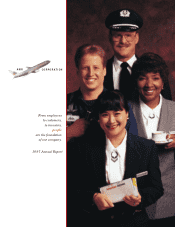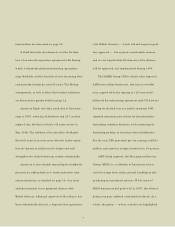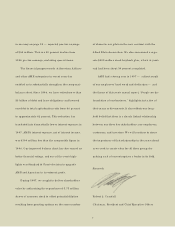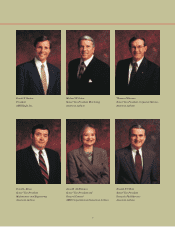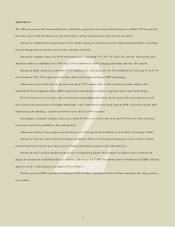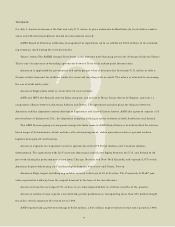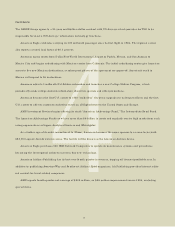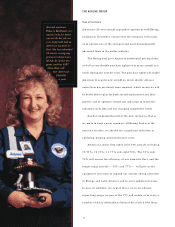American Airlines 1997 Annual Report Download - page 4
Download and view the complete annual report
Please find page 4 of the 1997 American Airlines annual report below. You can navigate through the pages in the report by either clicking on the pages listed below, or by using the keyword search tool below to find specific information within the annual report.
ineteen ninety-seven marked a fourth con-
secutive year of financial progress at AMR;
the company’s net earnings of $985 million were its
best ever after considering special items in previous
years. That performance was largely attributable to
improvements in the fundamental economics of the
airline industry, which propelled AMR’s largest enter-
prise, American Airlines, to a very good year. A solid
U.S. economy — which generated strong demand —
industry-wide capacity restraint and rational pricing
drove the industry and American to much improved
performance.
While the year’s results were satisfying, it started
on a difficult note, as a long-running dispute with the
Allied Pilots Association — which represents
American Airlines pilots — escalated into a brief
strike on February 15. While American’s operations
were affected only briefly, the threat of a substantial
disruption drove away many customers, adversely
affecting first-quarter results. Once the dispute was
resolved, we were able to regain our momentum.
While American’s capacity increased by less than
1 percent year over year, traffic increased by more
than 2 percent. As a consequence, load factor —
which is simply the percentage of seats filled —
increased to 69.5 percent, the airline’s highest ever. At
the same time, American’s passenger yield — or the
amount, on average, we collect to fly one passenger
one mile — increased by 2.6 percent.
Fuller planes and higher yields boosted revenue
per available seat mile by more than 4 percent,
enabling the company to sustain its unit revenue pre-
mium versus the industry average. That premium is
largely a function of our commitment to providing a
high-quality product, and, in 1997, we took a num-
ber of steps to ensure that American’s service
continues to set a high standard. Those steps, and
particularly the actions we took to improve on-time
performance, are highlighted in the essay on page 18.
Sustaining American’s revenue premium is a
LETTER FROM THE CHAIRM AN
2
N

